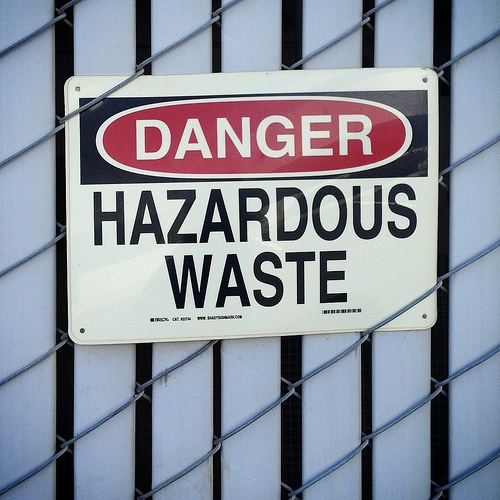California is a persistent exception to states’ limited abilities to create long-lasting effects on national environmental health and safety (EH&S) programs. One example, well-known here in California but relatively invisible to EH&S professionals outside the state, is Proposition 65.
Audit, Compliance and Risk Blog
Jon Elliott
Recent Posts
Tags: OSHA, California Legislation, EHS, Hazcom, MSDS
Federal laws (commonly referred to as RCRA, after the Resource Conservation and Recovery Act of 1976) provide comprehensive management requirements for parties involved in hazardous waste management, from “cradle to grave” covering generators, transporters, and offsite management facilities. Among these many provisions are requirements that “large quantity generators (LQGs)” submit biennial reports to the Environmental Protection Agency (EPA) or delegated states in March of every even-numbered year. March 2016 is the next such deadline, so now is a good time to review biennial report requirements.
Who Must File Biennial Reports?
A facility that was an LQG during calendar year 2015 must file a biennial report. LQGs are defined as a facility that generates either of the following during a calendar month:
The 2012 Jumpstart Our Business Startups (JOBS) Act enacted a number of changes to national securities laws intended to make it easier for small companies to raise capital privately, before having to confront the possibilities of initial public offerings or acquisition. One important piece directed the Securities and Exchange Commission (SEC) to enact rules to allow “crowdfunding” of qualifying small capital issues without requiring registration of the securities or issuer with SEC itself. The JOBS Act directed SEC to issue its rules by January 2013, but SEC only completed the task in November 2015, with rules that will become effective in May 2016. (I blogged about the proposal here) SEC’s new Regulation Crowdfunding (codified as 17 Code of Federal Regulations (CFR) part 227) defines requirements for issuers, and a new category of registered entities called “intermediaries”, who must register with SEC as brokers (using pre-existing rules) or as a new category of party called “funding portals.”
Read MoreTags: Business & Legal, SEC, EHS
On December 11, 2015, representatives of 195 countries agreed to continue to expand global efforts to combat climate change. The new Paris Agreement breaks a longstanding impasse with a clever mixture of binding but unenforceable commitments, and present agreements and ongoing agreements-to-agree. It creates a structure that might, or might not, evolve fast enough to prevent the catastrophic climate changes otherwise predicted by most scientific experts.
Read MoreTags: Environmental risks, Environmental, EHS, EPA, Greenhouse Gas, ghg, climate change
California Proposes Workplace Violence Prevention Requirements For Healthcare Facilities
Posted by Jon Elliott on Tue, Feb 09, 2016
Employees in the health care and social service sectors suffer workplace violence at much higher rates than in most other sectors, largely because of the higher risk from their patients and clients. In response to these risks, worker protection agencies and professional organizations have developed guidelines for workplace violence prevention in these sectors. Increasingly, worker protection laws and regulations are being revised to require these activities. Most recently, in December 2015 California has proposed to expand state requirements for security plans to include explicit workplace violence prevention programs.
Existing Requirements For Security Plans
Tags: Employer Best Practices, Health & Safety, OSHA, Employee Rights, California Legislation, EHS, Workplace violence
Clean Water Act Rulemaking Violated Limits On Publicity And Propaganda
Posted by Jon Elliott on Wed, Feb 03, 2016
The rulemaking was highly publicized, including intense efforts by EPA and the Corps to solicit public involvement and comments. The agencies made unprecedented use of social media, including Twitter, Facebook, YouTube, and Thunderclap. These included encouragement to recipients to re-post the EPA information to others. When issuing the final rules, the agencies reported that they had conducted more than 400 public meetings and received more than one million public comments (many through social media).
These publicity efforts were also caught up in intense partisan political sparring between the Republican-led Congress against high profile (Democratic) Obama administration environmental initiatives. In part to restrict support building efforts, the 2014 federal budget prohibited expenditures “for publicity or propaganda purposes, and for the preparation, distribution or use of any kit, pamphlet, booklet, publication, radio, television, or film presentation designed to support or defeat legislation pending before the Congress, except in presentation to the Congress itself.” Republicans subsequently charged that the EPA and Corps efforts violated these restrictions, adding those charges to efforts to repeal the new rules. The agencies have defended themselves with claims that their efforts amounted to authorized use of publicity and media to develop or promote their own policies.
Senator James Inhofe, Chairman of the Committee on Environment and Public Works, requested the Government Accountability Office (GAO, an independent research and reporting entity under Congressional authority) to investigate this disputed issue, and offer a formal opinion whether agency efforts violated the budgetary restrictions. On December 14, GAO issued its formal reply concluding that some of EPA’s efforts had indeed violated the restrictions. Although EPA had never directly invited the public to comment to Congress or to lawmakers, some of EPA’s postings provided hyperlinks to advocacy group pages that did so; for example, EPA provided links to Natural Resources Defense Council (NRDC) and Surfrider Foundation webpages that took positions on the issues and encouraged viewers to provide responses to Congress. In addition, other advocates had reposted the EPA information along with their own messages including encouragement to political action. GAO concluded that these links did violate restrictions.
As of this writing, EPA had acknowledged but rejected GAO’s conclusions. However, practitioners are cautioning agencies and non-governmental advocates to review their use of hyperlinks to consider whether “secondhand” advocacy or informational campaigns are attributable to the original source. For EPA and other agencies these considerations will affect use of appropriated funds, and for others they will affect use of hyperlinks in political contexts.
Self-Assessment Checklist
Does my organization routinely provide information via social media?
If so, does this information include advocacy as well as factual statements or advertisements?
If so, does the organization have policies or approaches to inclusion of hyperlinks to third parties in its postings, and to inclusions of hyperlinks to its postings by third parties?
Where Can I Go For More Information? Read More
Tags: Environmental, EHS, EPA, Internet
The Occupational Safety and Health Administration (OSHA) requires most employers to prepare and maintain records of occupational injuries and illnesses (I&I Logs) as they occur. OSHA also requires employers to post an annual I&I Summary in each “establishment” within their workplace by February 1, summarizing that workplace’s I&Is during the previous calendar year. Delegated state-run programs impose comparable requirements.
Read MoreTags: Employer Best Practices, Health & Safety, OSHA, Employee Rights, EHS
Congress Accelerates And Expands Civil Penalty Inflation Adjustments
Posted by Jon Elliott on Thu, Jan 28, 2016
Activists and politicians have long argued that potential punishments might be treated as a cost of doing business, and if that cost is low enough compared with the cost of compliance that some organizations may choose to ignore the requirements and take their chances. This possibility grows over time, if nominal penalty levels are left unchanged while inflation effectively reduces them.
To counteract inflationary erosion of these the effects of inflation, for the past quarter century U.S. federal law has directed most agencies to make periodic “cost of living” adjustments to maximum available civil penalty levels (there are no provisions for standing periodic adjustments to criminal penalties). The first version of this approach was enacted by the Federal Civil Penalties Inflation Adjustment Act of 1990, which directed the President to report annually on any adjustments made under existing statutory authority, and to calculate what such adjustments would have been if more agencies had the authority to make them.
How Has The Act Worked Since 1996?
Congress amended the Act in 1996 to authorize and require most agencies to make inflation adjustments every four years. The exceptions precluded cost of living adjustments to penalties under the following:
Read MoreTags: Health & Safety, OSHA, EHS, EPA
EPA Adopts Rules For Electronic Clean Water Act Reporting
Posted by Jon Elliott on Tue, Jan 26, 2016
The Clean Water Act (CWA) provides detailed national requirements, under which the U.S. Environmental Protection Agency (EPA) and states cooperate to establish water quality goals, and administer planning and discharge permit programs to preserve and enhance water quality nationwide. To improve the efficiency of these massive efforts, EPA has launched a series of initiatives to provide for electronic reporting and data management. Effective December 21, EPA has adopted extensive revisions to CWA rules to require electronic reporting instead of paper reporting under a wide variety of CWA provisions. These rules provide facilities with deadlines after 12 months (“Phase 1”) for high-priority discharger reports, and 5 years (“Phase 2”) for other discharger requirements. They also provide a series of deadlines for state regulators to share and report information electronically, ranging from 9 months to 6 years from now. EPA emphasizes that these revisions do not increase the amount of information reported by various entities, and so asserts that entities’ reporting burdens should actually diminish once they’ve managed their transition to the new methodologies. EPA also anticipates significant benefits from data sharing among agencies.
Read MoreTags: Health & Safety, EHS, EPA, Hazcom, Stormwater
EPA Proposes To Revise Hazardous Waste Generator Requirements–Part 2
Posted by Jon Elliott on Wed, Jan 20, 2016
Separate Summaries For Generator Categories
In September, EPA published substantial regulatory revisions (which EPA entitles collectively as the Hazardous Waste Generator Improvements Rule) to its regulation of hazardous waste generators under the Resource Conservation and Recovery Act. In Part 1 of this series of blogs (click here), I summarized the principal revisions. In this Part 2 I recast the proposal to compile changes applicable to different categories of generators:
-
“Conditionally exempt small quantity generators (CESQGs)” – which are being renamed as “very small quantity generator (VSQG)”.
-
Small quantity generators (SQGs).
-
Large quantity generators (LQGs).
What Requirements Would Apply To VSQGs?
EPA’s proposes to rename Conditionally Exempt Small Quantity Generators (CESQGs) as Very Small Quantity Generators (VSQGs), and to offer these generators additional flexibility. Eligibility for this category continues to be determine based on the following monthly waste generation volumes: Read MoreTags: Health & Safety, OSHA, EHS, EPA, Greenhouse Gas, Hazcom










